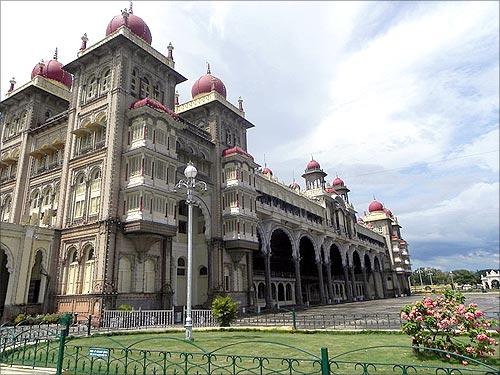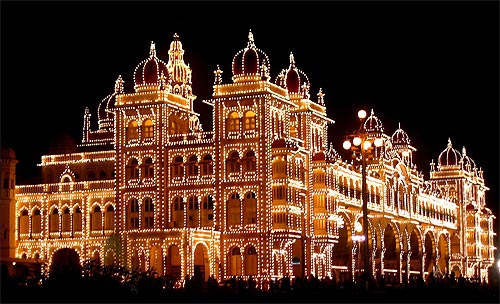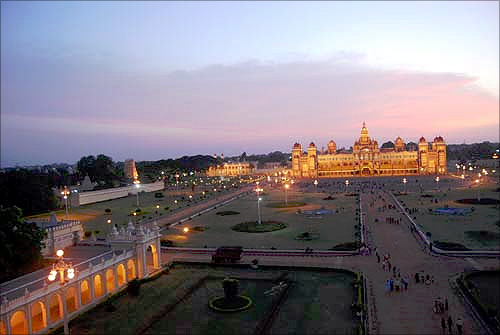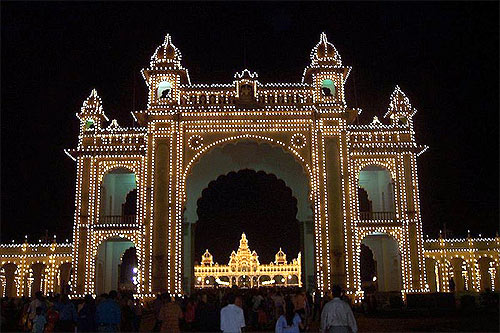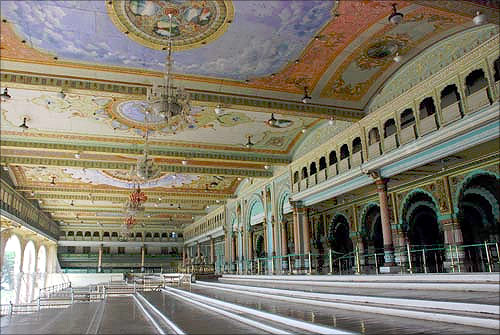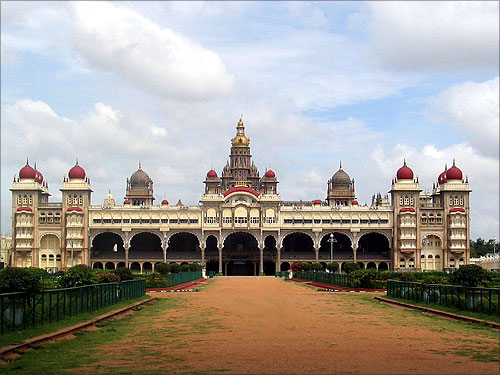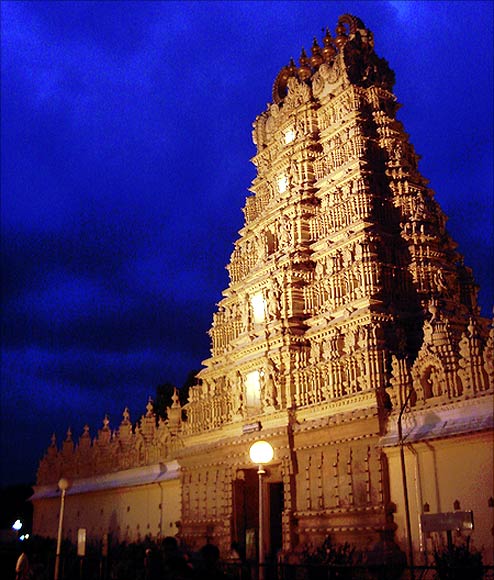 | « Back to article | Print this article |
The iconic Mysore Palace to get a makeover
The allocation of Rs 25 crore (Rs 250 million) for the facelift of the iconic Mysore Palace in chief minister Sadananda Gowda's Budget 2012-13 will pave the way for the first major makeover of the palace which is celebrating its centenary year.
It was during the same year 100 years ago that the construction of the palace was completed.
Click NEXT to read more...
The iconic Mysore Palace to get a makeover
Though, it was completed a century ago in phases, the structure was not as it looks on Sunday.
A fire mishap during the marriage of the eldest princess of Chamaraja Wodeyar, Jayalakshmammanni, proved a veritable blessing in disiguise. It lent a fillip to encourage and conserve the then declining sculptural scenario of India.
Click NEXT to read more...
The iconic Mysore Palace to get a makeover
The reconstruction of part of the nine-decade-old wood and mud palace that stood on the same ground became necessary in 1897 on account of the folly of a maid servant at the wedding celebrations on February 28 that year.
The marriage pandal erected in the palace quadrangle caught fire and one-fifth of the old building was destroyed, including the parapet and three storeys above it, up to the gold pinnacles, the Sanskrit library, which housed valuable manuscripts, the music room and Balakhana.
Click NEXT to read more...
The iconic Mysore Palace to get a makeover
People living in the congested palace fort brought water in pots and pans and extinguished the fire. By then, the inferno had wrought much havoc.
The design for the construction of the new Palace reflected the general outline of the old building as built during the days of Purnaiya when Krishnaraja Wodeyar III succeeded to the throne in 1799.
Click NEXT to read more...
The iconic Mysore Palace to get a makeover
A large number of masons and other workmen were brought in from across India. The new building was built mostly of stone and iron materials.
Excellent stones from the quarries in the then Mysore state were procured. The quarry at Turuvekere furnished a unique kind of trap which allowed for the finest and elaborate carvings, and kept sharp edges.
Click NEXT to read more...
The iconic Mysore Palace to get a makeover
Masons from Trichinopoly, Madras, and other districts from Southern India were at first able to work only with pointed chisels.
But, they learnt from their brethren of Kolhapur, Jaipur and other places in Northern India to work with sharp-edged, wedge-shaped tools and were able to do exquisite carving.
Click NEXT to read more...
The iconic Mysore Palace to get a makeover
When construction was completed in 1912, the total cost of Rs 44,17,913 i.e. over Rs 44 lakh was nearly double the original estimate of Rs 25,00,000.41 or Rs 25 lakh.
The actual cost of construction was equal to nearly one-quarter of the annual revenues of the Mysore state.
Click NEXT to read more...
The iconic Mysore Palace to get a makeover
But the palace that was built then was not as big or beautiful as the one standing there on Sunday. The parapet, from where the Maharaja conducted durbar, was found inadequate for the purpose.
Additional work was carried out in 1930s to enlarge it. This added a much wider stage to the palace building to accommodate more spectators and participants in the durbar.
Click NEXT to read more...
The iconic Mysore Palace to get a makeover
This is the palace we see on Sunday, the enlarged one.
Conservation will now comprise of an upgrade of the illumination, conservation of murals, pillars and roof, a fresh look for the 25-acre garden and better facilities for tourists, according to Palace Board Deputy Director N Subramanya.
Click NEXT to read more...
